What’s Better for a Deck – Composite or Lumber?
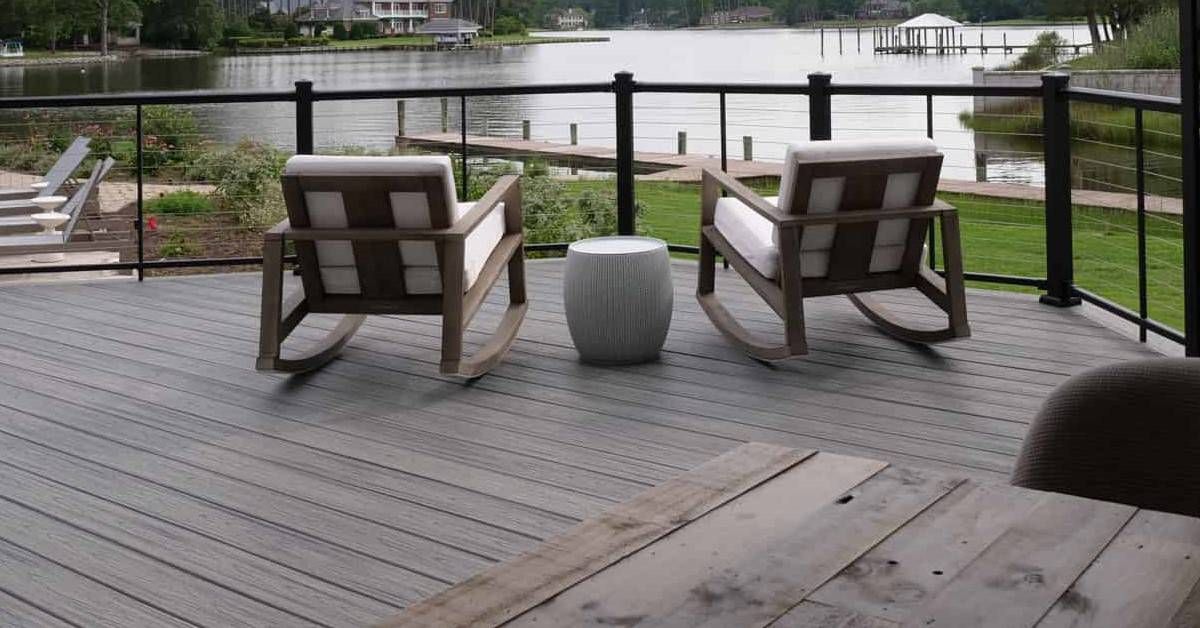
When it comes to building a wood deck, one of the most important decisions homeowners will make is choosing the material, the desired color, and features to incorporate into the overall design. There are two primary options: lumber and composite decking material. Both have their own set of advantages and disadvantages, and it’s important to weigh these factors before making a decision. Here’s a closer look at the pros and cons of each option.
Solid Structures designs and builds decks for all of your outdoor living needs in the Virginia Beach area, to include Chesapeake and other areas within Coastal Virginia. For a professional design consultation, please Contact Us to get your project started.
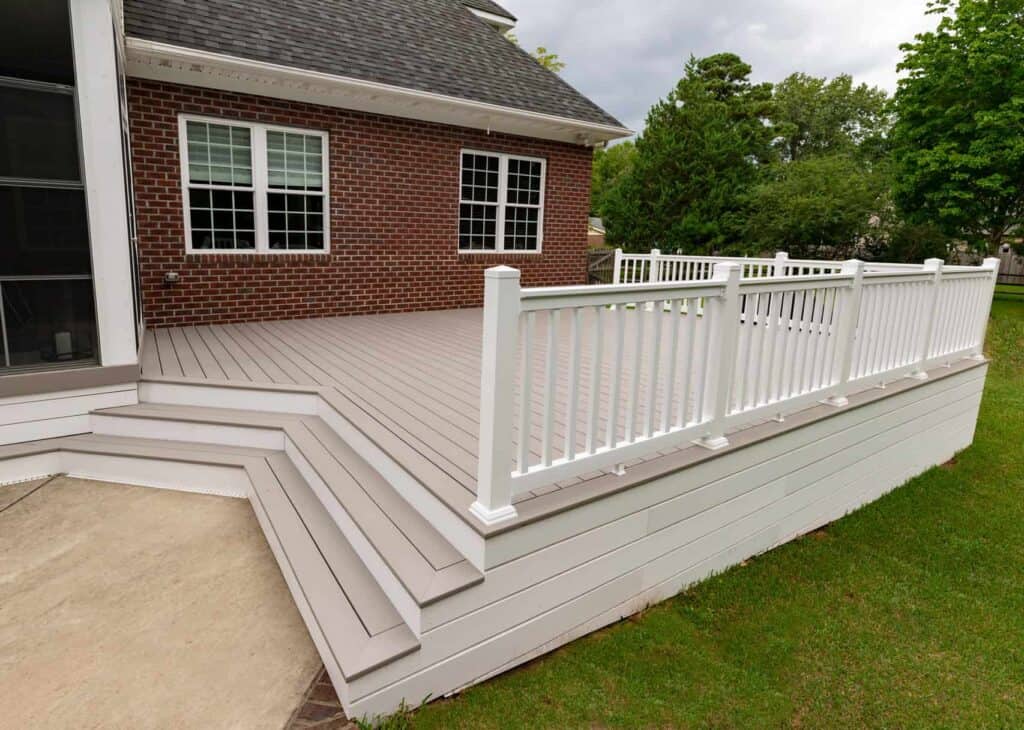
Lumber Decking
Here we’ll cover some pros and cons of lumber decking material.
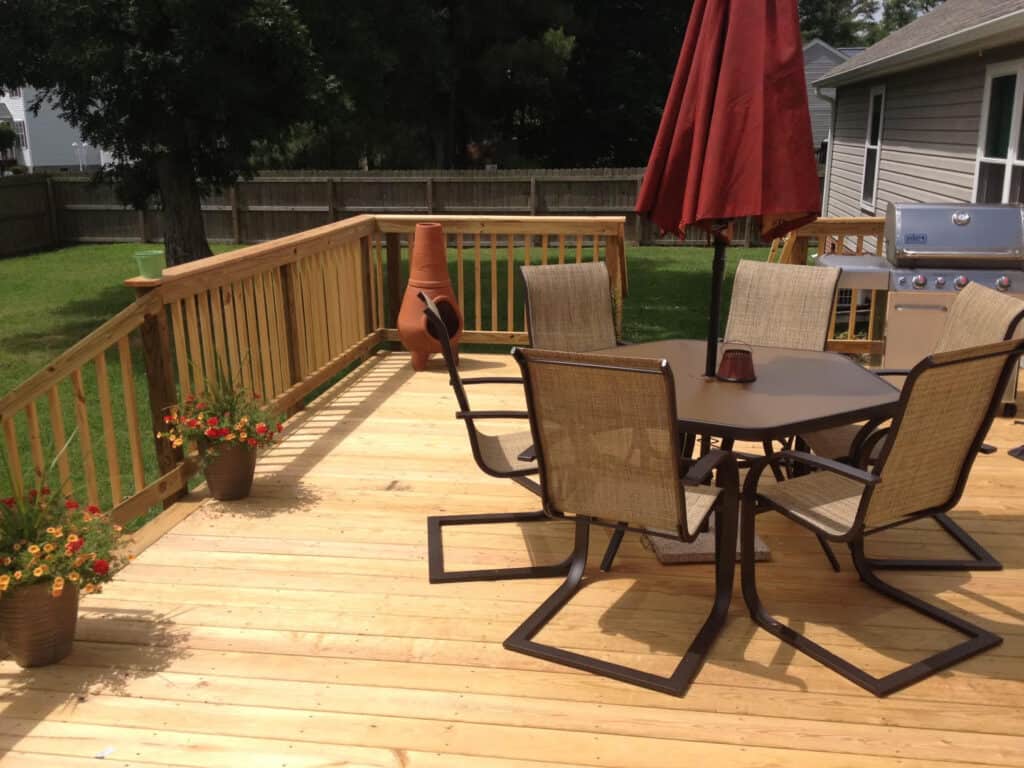
Pros
- Affordability: One of the biggest advantages of using real wood and pressure-treated lumber for your deck is that it’s typically more affordable than composite materials. If you’re on a tight budget, lumber may be the way to go.
- Natural look: Many people prefer the look of natural look of real wood over composite materials. Lumber decking can add a warm, rustic feel to your outdoor space. However, composite decking has been looking more realistic and is significantly less maintenance.
- Easy to work with: Real wood is a relatively easy material to work with, even if you’re not an experienced DIYer.
Cons
- Maintenance: Lumber requires regular maintenance to keep it looking good. You’ll need to stain or seal your deck every few years to protect it from the elements and prevent rot. Staining/sealing is also the primary way to achieve the desired color that you want.
- Durability: Lumber is susceptible to damage from pests and weather, which can lead to decay over time. It may not last as long as composite materials.
- Safety concerns: Lumber decking can become slippery when wet, which can be a safety hazard. It’s also prone to splinters, which can be painful if stepped on.
Composite Decking
Here we’ll cover some pros and cons of composite decking material.
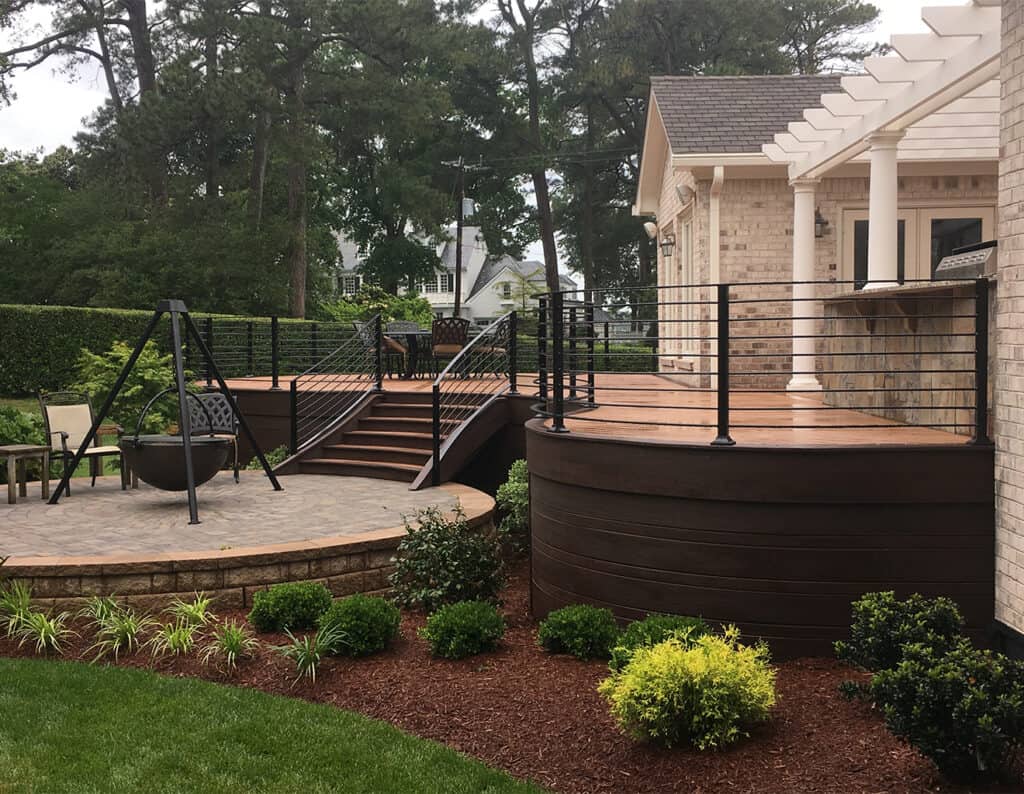
Pros
- Low maintenance: Composite decking requires very little maintenance compared to lumber. You don’t need to stain or seal it, and it’s resistant to rot, mold, and mildew.
- Durability: Composite decking is extremely durable and can last for decades. It’s resistant to pests, weather, and other environmental factors that can damage lumber.
- Safety: Composite decking is typically less slippery than lumber, which makes it safer to walk on. It’s also less prone to splinters.
Cons
- Cost: Composite decking is generally more expensive than lumber. If you’re on a tight budget, it may not be the best option.
- Limited color options: While composite decking comes in a variety of colors, it doesn’t have the same natural look as lumber. If you’re looking for a specific color or pattern, you may not find it in composite materials.
- Heat absorption: Composite decking can absorb heat from the sun, which can make it uncomfortable to walk on in hot weather. Newer types of composite decking mitigate this concern with material technology and lighter color options.
Conclusion:
Ultimately, the decision between lumber and composite decking comes down to your personal preferences. In short, pressure-treated lumber is less expensive and requires more maintenance than composite decking material. Composite decking material is more expensive but likely less in the long-term if considering maintenance over time as part of the cost. Lastly, we recommend visiting completed projects of both to experience the look and feel of all options, colors, and different design features that can be incorporated. Here at Solid Structures, we specialize in proper consultation and design to ensure your deck installation investment compliments your existing home, lifestyle, and entertaining preferences.

Written By Scott Prunty
Scott Prunty is the president of Solid Structures. Throughout his 15 active years in the Design-Build Outdoor Living industry, he has earned various certifications in the areas of ICPI Residential, ICPI Advanced Residential, ICPI Commercial, PCIP, and is an ICPI certified instructor.
- 15 years actively in the Design-Build Outdoor Living industry
- ICPI certified Instructor
- ICPI Residential, ICPI Advanced Residential, ICPI Commercial, and PCIP certified
- Imagine Pools certified installer
- Fluidra certified installer
- Trex Platinum Pro
- Avid saltwater person, boating, diving, surfing, fishing

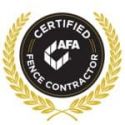




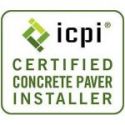

Outdoor Living Redefined. Solid Structures offers full service design build capabilities all under one roof.
179 S Birdneck Rd
Virginia Beach, VA 23451
Serving Areas
- Chesapeake, VA
- Suffolk, VA
- Portsmouth, VA
- Norfolk, VA
- Virginia Beach, VA
- and surrounding areas
Hours of Operation
- Mon - Fri: 8:00am – 5:00pm
- Sat - Sun: Closed
-
Weekends by Appointment Only
Outdoor Living Redefined. Solid Structures offers full service design build capabilities all under one roof.
© 2025 Solid Structures - All Rights Reserved.











